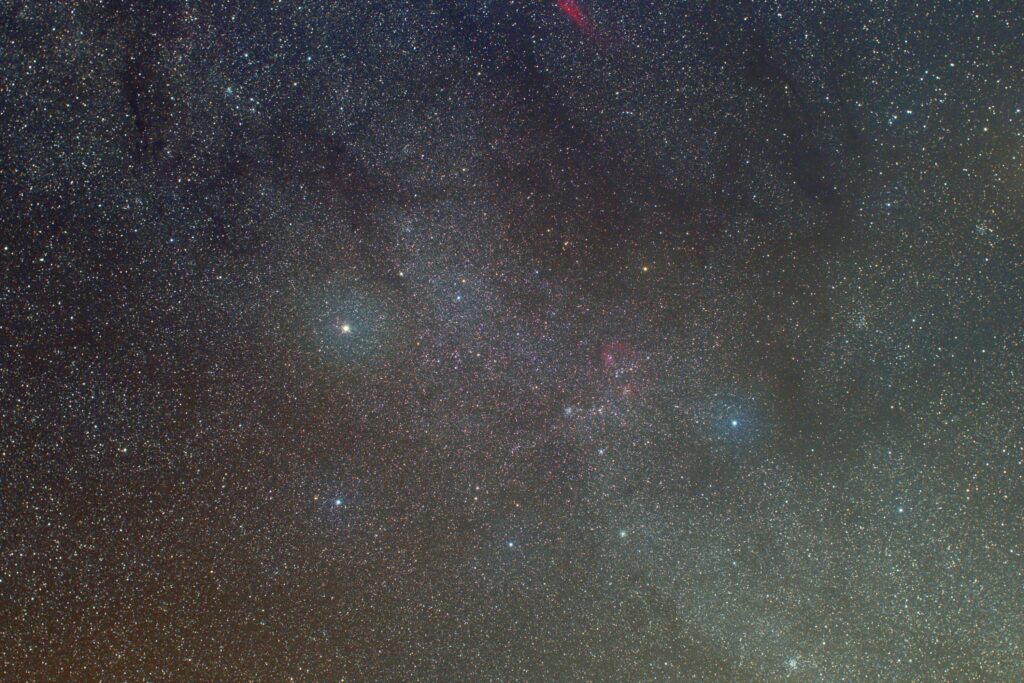 Science Daily: Uranus
Science Daily: Uranus
- New images reveal what Neptune and Uranus really look like January 5, 2024
- Ringing in the holidays with ringed planet Uranus December 19, 2023
 Science Daily: Pluto
Science Daily: Pluto
- How Pluto got its heart April 15, 2024
- Evidence of geothermal activity within icy dwarf planets February 15, 2024
 Science Daily: Kuiper Belt
Science Daily: Kuiper Belt
- How Pluto got its heart April 15, 2024
- Evidence of geothermal activity within icy dwarf planets February 15, 2024
I’m going to need to start a new constellation portrait section to organize these, and the problem is my ability to get good data has outstripped my ability to process them into good images.
I spent October 13, 2020 at Cherry Springs (PA) and while it was not as clear as the night I spent in August, it was far better than anything I’d get within 100 miles or so of my home in Brooklyn, NY. There was a bit of light haze (very light) that was noticeable in that there was a bit of glow around Jupiter and Mars. Of course, that’s actually okay for constellation portraits where, if I had been thinking better, I would have taken my light fog filter to deliberately blur and spread out the star images which helps bring out their intrinsic color. When perfectly focused, they tend to saturate the pixels and all come out pure white.

| Object | Constellation Auriga |
| Camera | Hap Griffin Modified Canon T6i |
| Lens/Scope | Canon 28mm f/1.4 @ f/4 |
| Exposure | 48 minutes (12 x 4 min) @ ISO 800 |
| Location | Cherry Springs State Park, PA |
| PixInsight | Processing for calibration, curve adjustments, and saturation. |
I have a large number of overlapping frames that I really want to turn into mosaic that spans a big chunk of the Milky Way from at least Cygnus to Auriga, but that’s going to take a while to build up the skills to stitch them together without ending up with contrast lines along the seams. But I’m reasonably happy with this as a first pass. It’s certainly one of my better images for this wide field view.
Written by Roland Roberts
Search
.Archives
- May 2024 (1)
- April 2024 (3)
- September 2022 (5)
- April 2022 (1)
- January 2022 (3)
- December 2021 (4)
- September 2021 (3)
- July 2021 (1)
- January 2021 (1)
- November 2020 (2)
- October 2020 (2)
- September 2020 (2)
- August 2020 (5)
- July 2020 (1)
- November 2019 (2)
- September 2019 (1)
- August 2019 (2)
- September 2017 (1)
- August 2017 (1)
- September 2015 (3)
- August 2015 (2)
- June 2015 (5)
- May 2015 (3)
- May 2013 (2)
- January 2013 (1)
- December 2012 (2)
- September 2012 (1)
- June 2012 (1)
- May 2012 (1)
- October 2011 (2)
- September 2011 (2)
- April 2011 (2)
- March 2011 (10)
- January 2011 (8)
- November 2010 (2)
- October 2010 (1)
- September 2010 (3)
- August 2010 (2)
- July 2010 (1)
- June 2010 (1)
- April 2010 (3)
- February 2010 (3)
- January 2010 (3)
- December 2009 (6)
- November 2009 (3)
- October 2009 (7)
- September 2009 (8)
- August 2009 (4)
- July 2009 (1)
- June 2009 (2)
- May 2009 (2)
- April 2009 (7)
- March 2009 (1)
- February 2009 (6)
- January 2009 (4)
- December 2008 (4)
- November 2008 (3)
- October 2008 (11)
- September 2008 (4)
- August 2008 (5)
- July 2008 (5)
- June 2008 (2)
- April 2008 (4)
- March 2008 (18)
- February 2008 (9)
- November 2007 (1)
- October 2007 (3)
- July 2007 (3)
- April 2007 (1)
- March 2007 (6)
- February 2007 (3)
- December 2006 (3)
- October 2006 (4)
- September 2006 (1)
- July 2006 (5)
- May 2006 (10)
- April 2006 (9)
